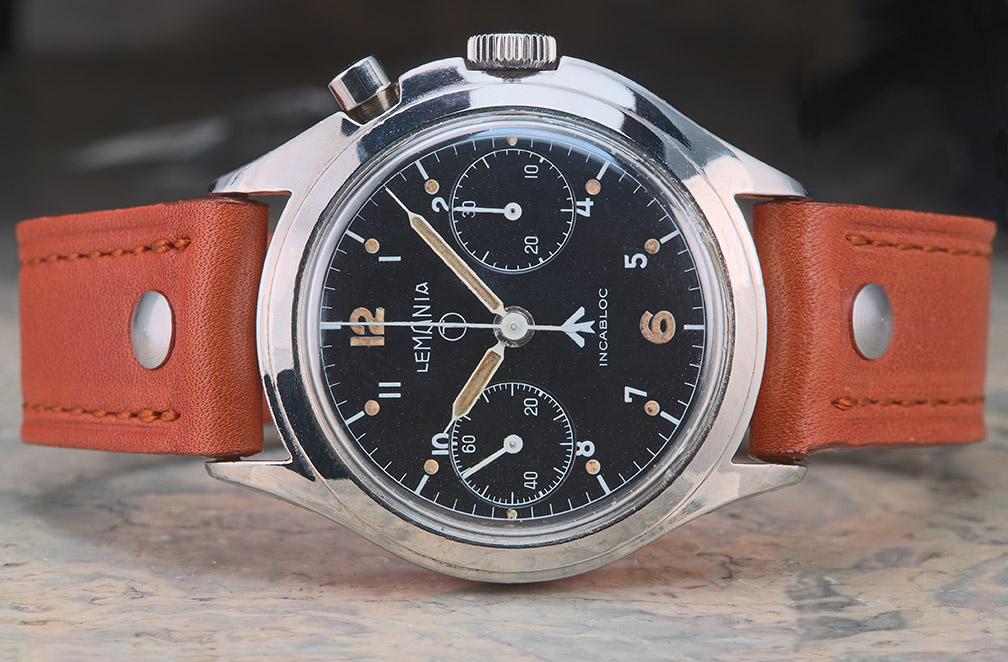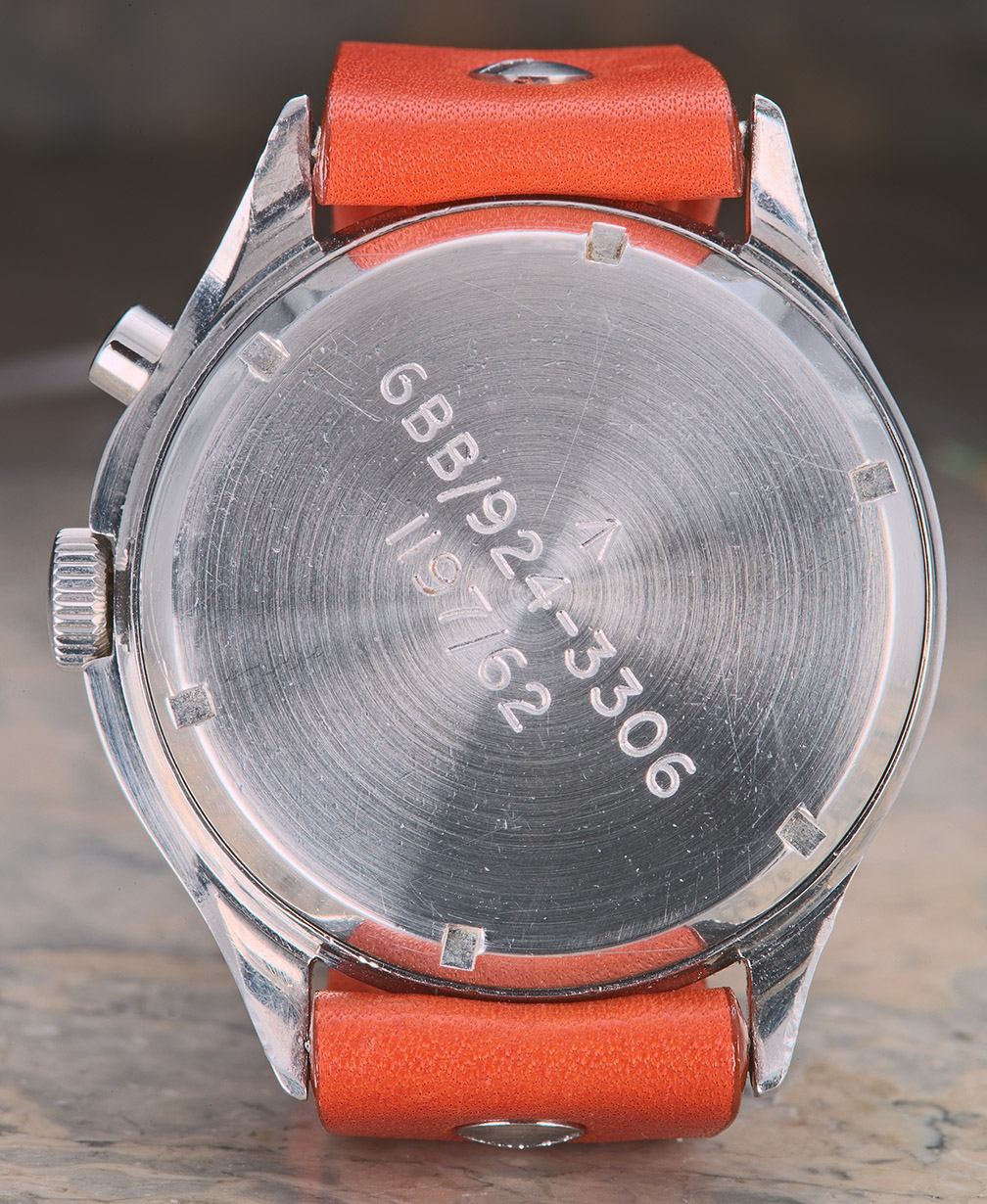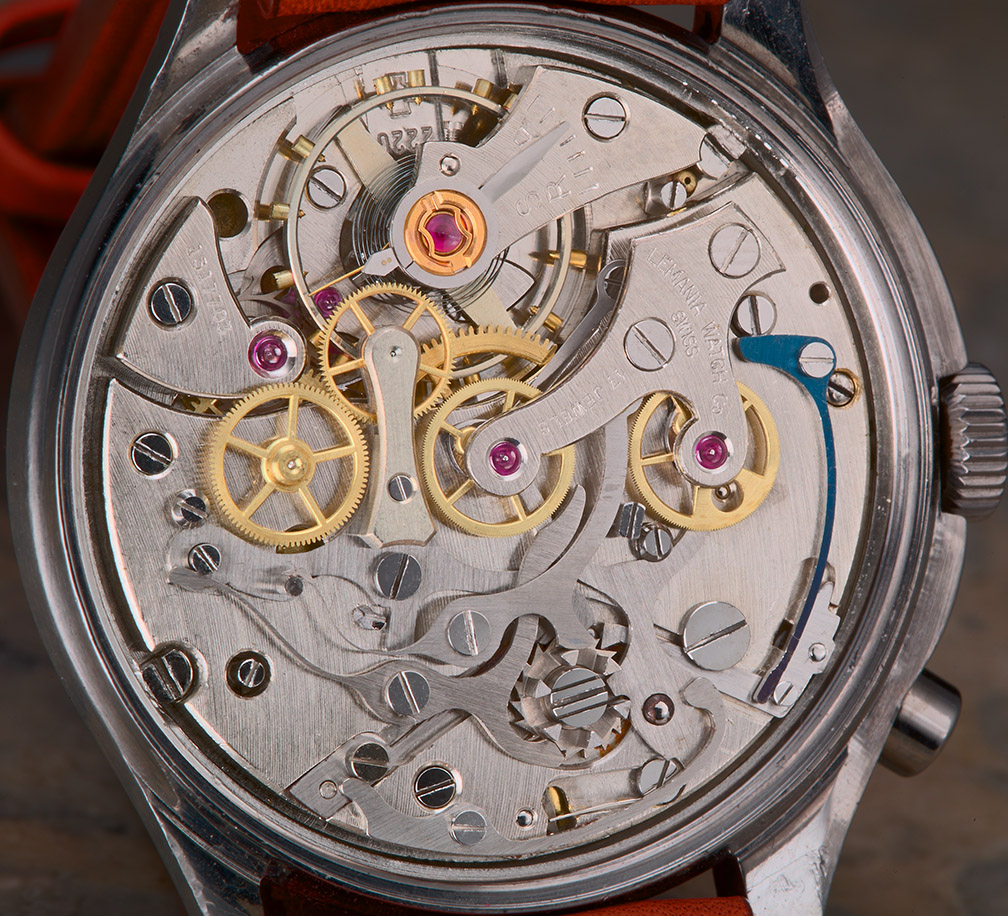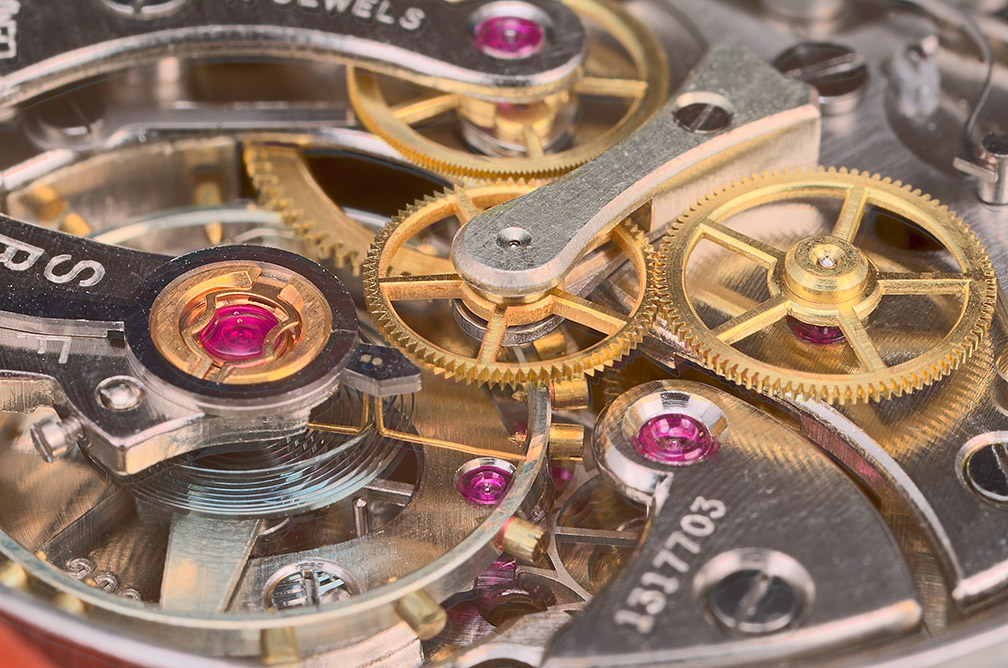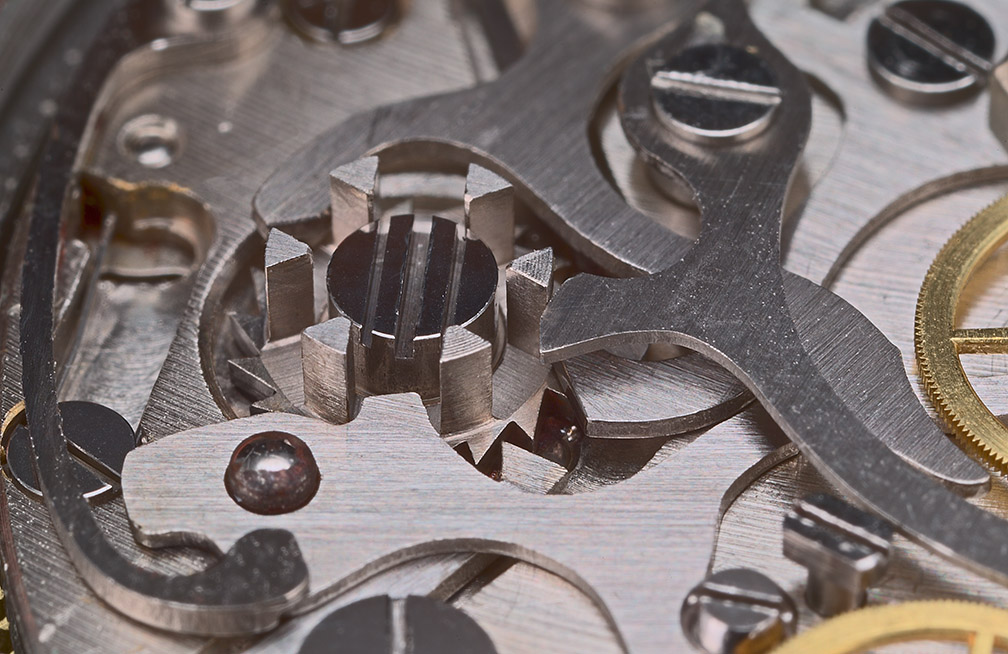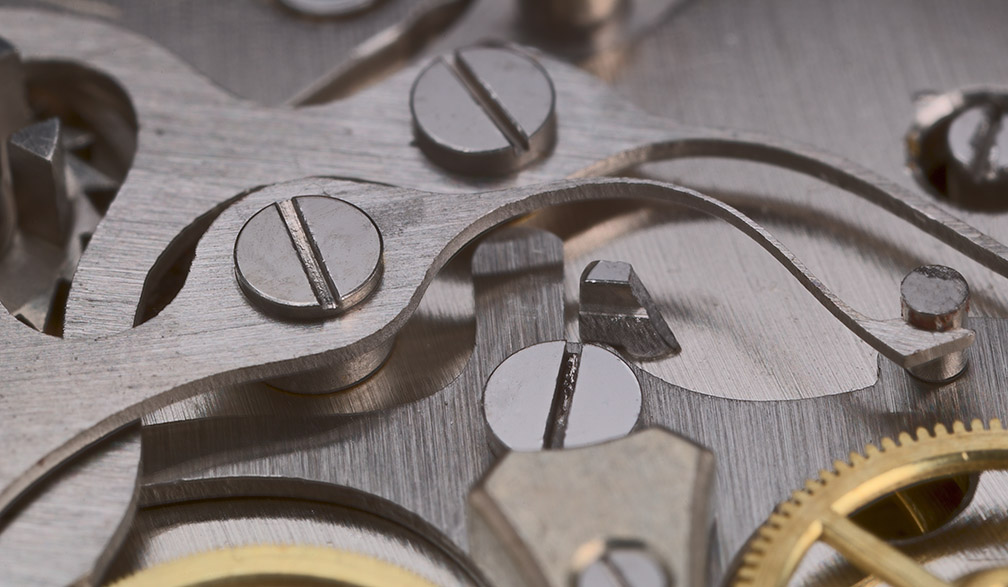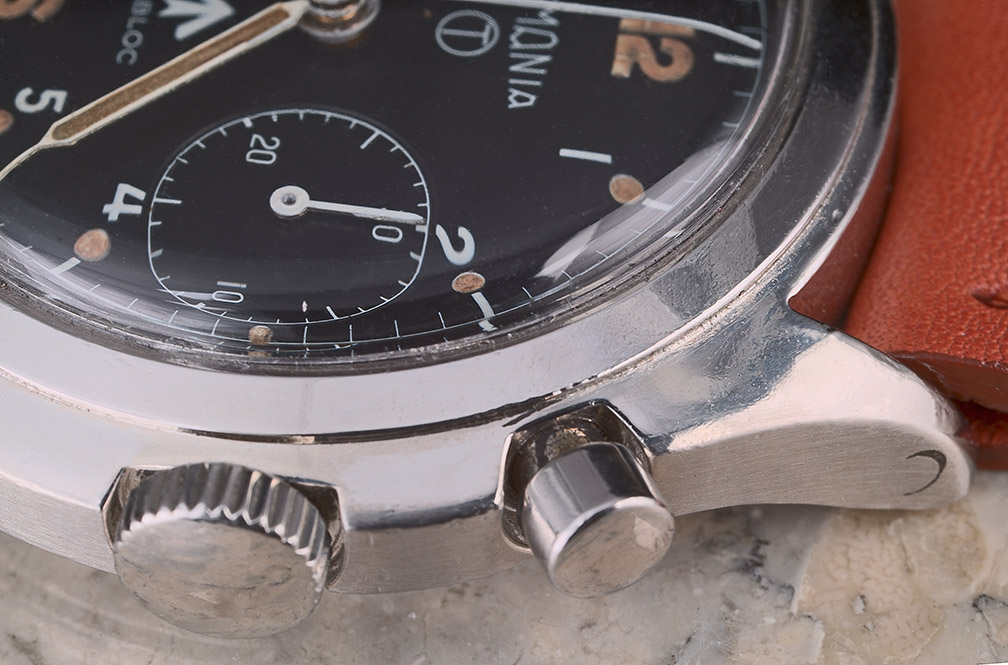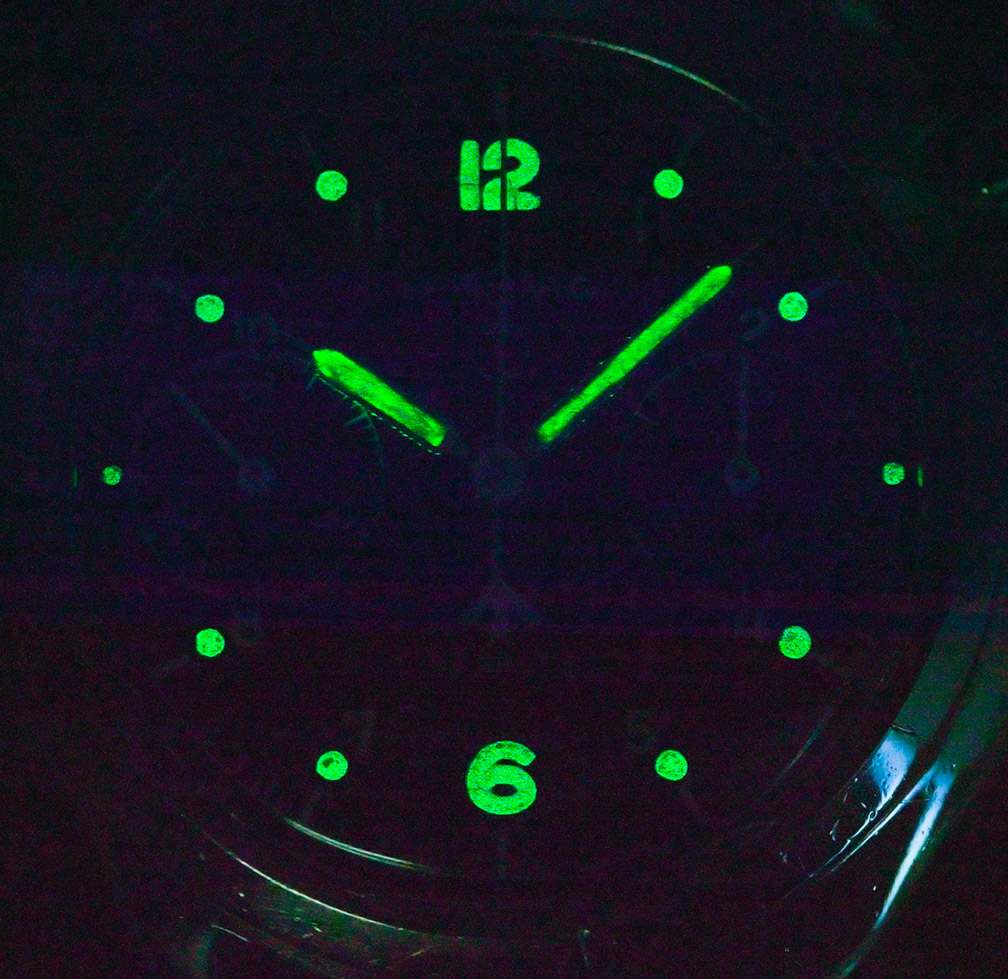Lemania's other strength was as a supplier to various militaries and official agencies. Lemania watches (or sometimes movements only) have been provided to Czechoslovakia, France, Sweden, Rhodesia, Australia and others, and they were one of twelve companies complying with the rigorous post-WWII British WWW (watch, wristlet, waterproof) requirements. With this history, it might be expected that Lemania's military chronographs would be exceptional watches, and this turns out to be the case.
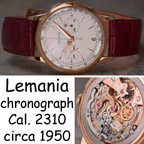
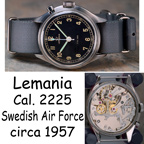
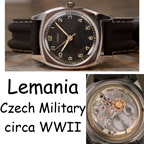
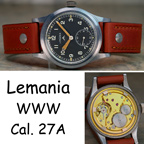
The present watch was issued by the British RAF in 1962 and features a unique asymmetric stainless steel case which provides some protection to the crown and pusher. It has a matte black broadarrow dial, with luminous hands and markings of mildly-radioactive tritium (note the "circle-T" symbol). The case is polished at top and bezel along with brushed sides, and is heavy and large: 40mm across and 12mm thick. Similar watches were issued for quite a few years, and so there were many variations; some had white dials, different luminous material or no arrow, and cases may have been symmetric or fully brushed.
